Berlin is a city in reverse, if its buildings are anything to go by: each year great swathes of it are transformed into an approximation of the imperial capital it once was. This process has come to a head with the resurrection of the Berlin Palace, which, after numerous setbacks, is due to open in December as a museum, but its effects can be seen throughout the capital, and indeed the country as a whole. Palaces are rebuilt, as are entire medieval quarters, and new development is prescribed a strict historic drag. Why is modern Germany, by some measures the most successful European state of the 21st century, so consumed by nostalgia for the city of the past?
The reconstruction of the Berlin Palace is the most obtrusive instance of this tendency. The enormous baroque structure currently nearing completion at the capital’s centre stands on the site of the Palast der Republik, an equally vast modernist complex built between 1973–76 by the government of East Germany as a combined leisure centre and parliament. That structure stood in turn on the site of the imperial palace, which had been damaged during the Second World War and pulled down by the GDR; their own replacement for the building was demolished after reunification.
Although the campaign to rebuild the old palace was first waged in the early 1990s, a lack of funds delayed this Cold War project until recently, and the intended function of the building was never clear. Finally, it was decided that it should host the Humboldt Forum, a museum and research institute displaying ethnographic collections largely assembled during the empire. Unsurprisingly, a new-build imperial palace has proven to be a provocative home for colonial booty, especially given the increasing momentum behind the campaign for restitution of such artefacts.
In Germany, as the ongoing controversy over the palace demonstrates, the struggle of the present with the past is endless, and its implications for the city delicate; particularly so in Berlin, a city still tormented by its 20th-century wounds. Critics have observed that the erasure of East German traces such as the Palast der Republik is, like the filling of lots left vacant by the war, designed to produce a false historical unity: the expression of an urge to forget the unhappy episodes that have been the focus of much official Erinnerungskultur, or remembrance culture. Debate over this strategy has been fierce, with some residents of the former east (for example) feeling that their own pasts are being erased in the process.
Furthermore, this smoothing of traumatic ruptures does not seem overly concerned with Nazi relics – the current German finance ministry occupies the erstwhile headquarters of Göring’s air force, for example. Indeed, quite the contrary could be asserted. While modernist structures are being demolished around the country, as in the case of Frankfurt’s brutalist town hall, new construction is bent not only on recovering the imperial city: it often looks disconcertingly like the architecture of the National Socialists. The water separating the architecture of these two eras is dangerously murky. Although its current advocates, such as Hans Kollhoff and David Chipperfield, may claim they are harking back to the great early 19th-century architect Karl Friedrich Schinkel, this turn to neoclassicism tends to evoke the 1930s, inevitably since the last turn away from modernism to columns in the city was undertaken at that time. In some cases, this ambiguity even seems intentionally cultivated.
The new-old palace, for instance, is not a perfect simulacrum. The east facade is devoid of ornament, offering instead a bare grid that nonetheless suggests the proportions of classical architecture. This etiolated classicism, stripped of ornament except for the implication of columns, is not inherently fascistic – it can also be found in London and Washington – but it was the preferred mode of fascist regimes, and the monumental reappearance of this trope in the centre of Berlin can hardly fail to recall Speer and Hitler’s design for a new world capital. The palace is not the only instance of this tendency: the German intelligence service’s huge new headquarters which opened in 2019, the largest such facility in the world, meets the street with two severely classicising pavilions. These are reminiscent of the long-demolished Ehrentempel in Munich, twin monuments to the Nazis killed in the Beer Hall Putsch.
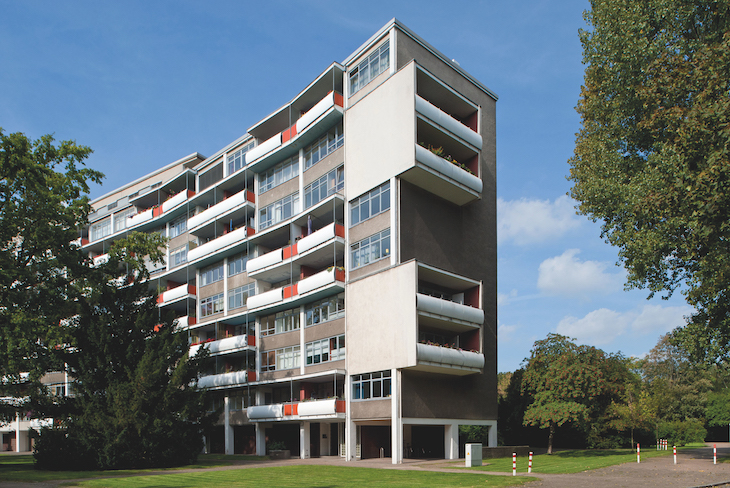
The Gropiushaus in the Hansaviertel quarter, Berlin, which was reconstructed in the late 1950s and early ’60s and includes apartment blocks designed by Walter Gropius, Alvar Aalto and Oscar Niemeyer. Panther Media GmbH/Alamy Stock Photo
Berlin’s retrograde motion can be attributed in part to its post-reunification building codes. The enforced maintenance of pre-1945 rooflines, materials, and street patterns has resulted in the city’s relative coherence, which was the proclaimed intention of this strategy. Instead of the chaos of more liberally regulated cities such as London, and the supposedly dehumanising post-war towers at Berlin’s edges, the advocates of what is called ‘critical reconstruction’ – developed in the 1970s by architect Josef Paul Kleihues – argued for an architecture of modest regularity and continuity.
However, one must ask why this search for lost order overlooked other, less tainted models, such as modernist estates of the 1920s by Bruno Taut, or projects of the 1950s such as the Hansaviertel, with blocks designed by architects including Walter Gropius, Alvar Aalto and Oscar Niemeyer. These were hardly chaotic or ‘dehumanising’, whatever that means in the context of architecture. Despite objections from the planners of reunified Berlin that modernism had no concept of public space, these lushly wooded estates seem more suited to our own ecologically sensitive age than the ‘stony Berlin’ of Prussian militarism (or worse) that is favoured by its current architects.
Instead we have Kollhoff’s Walter-Benjamin-Platz, a colonnaded square constructed in west Berlin at the turn of the millennium which echoes the severe, grey regularity of the fascist city – ironic, to say the least, given the fate of its namesake. To drive the point home, part of its paving was originally inscribed with a quotation from Ezra Pound’s ‘Usura’ Canto. Benjamin, of course, died fleeing the Nazis; the offending text was removed only this January.
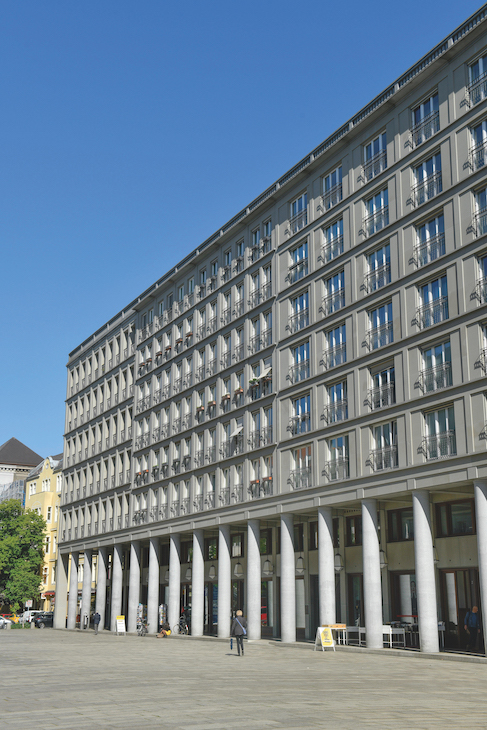
Walter-Benjamin-Platz, Charlottenburg, Berlin, designed by Hans Kollhoff and built in 2000. Arco Images GmbH/Alamy Stock Photo
Kollhoff’s design is unusually frank in disclosing its precursors; most of Berlin’s recent classicising architecture is, like the Wilhelmine-esque villas of Petra and Paul Kahlfeldt, or the commercial nonentities around Leipziger Platz, more ambiguous. Yet all of them express a desire to turn back time. The association for the reconstruction of the palace, for instance, is open about the aims of the project: to ‘complete [Berlin’s] historic centre and heal the previously wounded cityscape’. But the desire to live in the past, taken to the extreme of rebuilding an earlier version of the city, can, in a place like Berlin, never be unproblematic. Furthermore, the money and the power to build in Berlin evidently lies in the hands of those who hanker after a very particular version of the city’s story. The reason for this preference is never explicitly stated. Perhaps that is because the implications are still – as yet – unspeakable in a country with Germany’s past.
From the October 2020 issue of Apollo: preview and subscribe here.
Unlimited access from just $16 every 3 months
Subscribe to get unlimited and exclusive access to the top art stories, interviews and exhibition reviews.

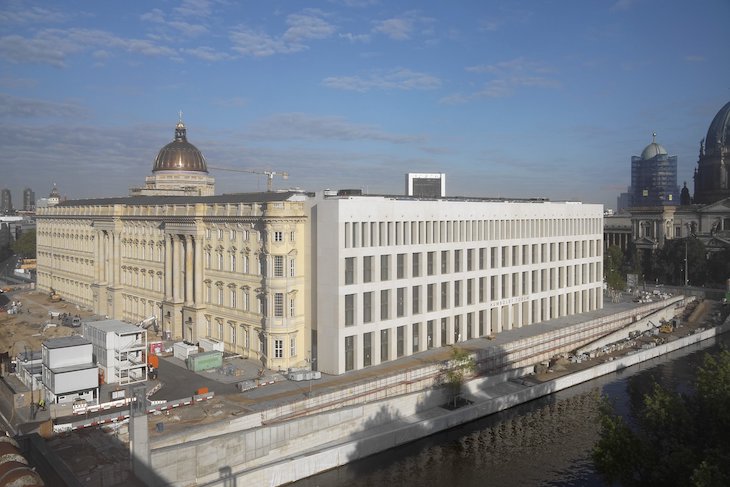
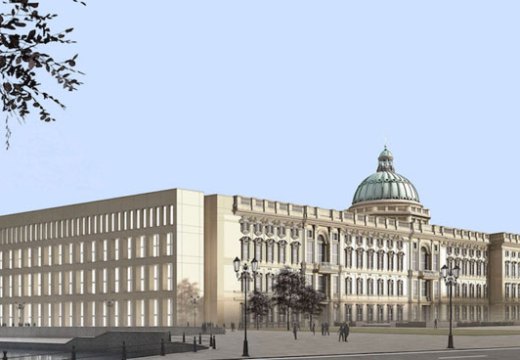
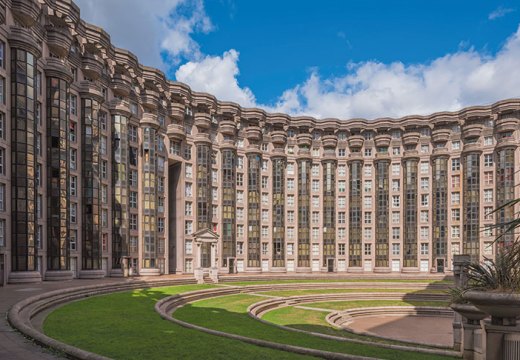
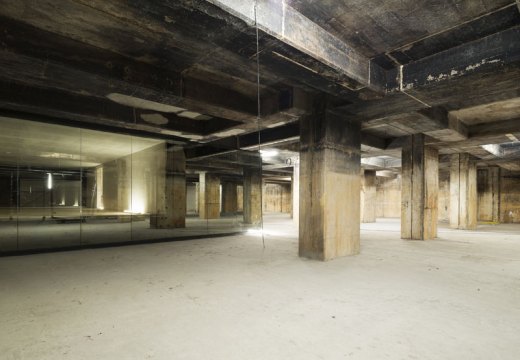









![Masterpiece [Re]discovery 2022. Photo: Ben Fisher Photography, courtesy of Masterpiece London](http://www.apollo-magazine.com/wp-content/uploads/2022/07/MPL2022_4263.jpg)
It’s time for the government of London to return to its rightful home